“Better to have a meal without meat than a house without bamboo,” says a Far Eastern proverb. Thanks to its strength, sustainable nature, low cost, and high resistance to natural disasters such as earthquakes and hurricanes, bamboo has grown to be a popular material for architects in Asia and beyond. Known as the building material of the poor in ancient China and India, today it is being increasingly integrated into modern architecture, its lightness and flexibility allowing to create arresting organic forms in the buildings of all types.
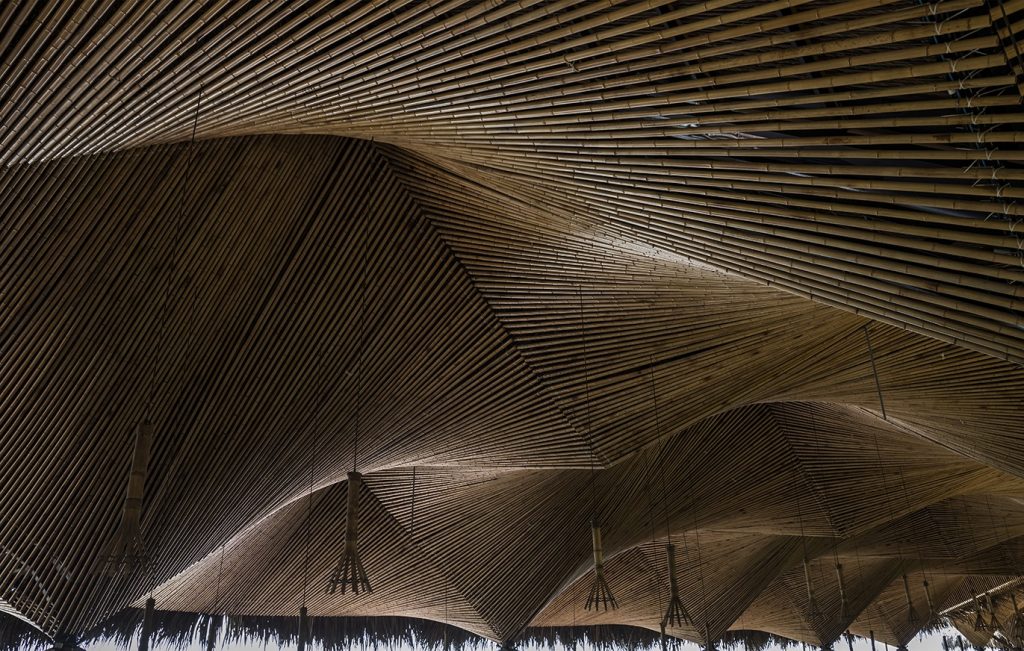
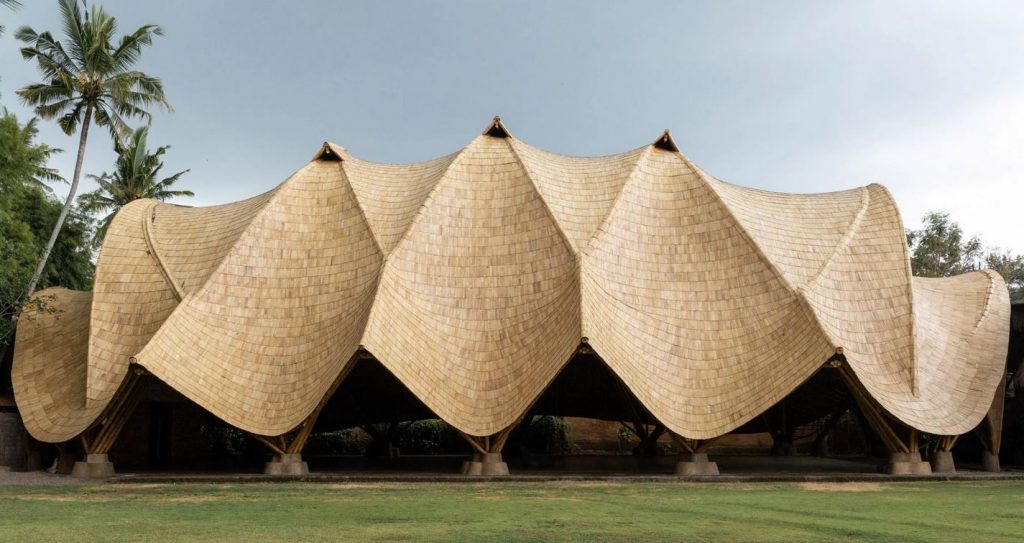
The Arc by Ibuku, Jörg Stamm and Atelier One
Architecture studio Ibuku led by Elora Hardy has teamed up with bamboo architect Jörg Stamm and structural engineering firm Atelier One to develop The Arc, a multipurpose sports court for a private school in Bali.
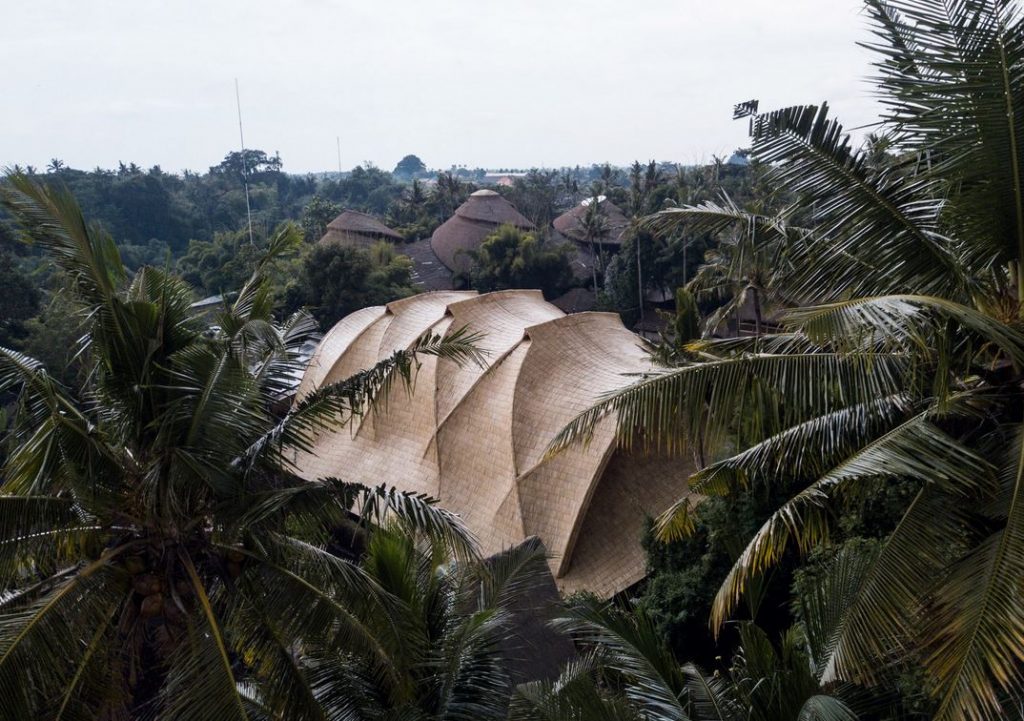
The Arc by Ibuku, Jörg Stamm and Atelier One
The Green School, a private educational institution that promotes sustainability through learning in a natural environment, was founded by Elora’s parents John and Cynthia Hardy in 2008, and has been constructing bamboo buildings at its campus in Bali, Indonesia.
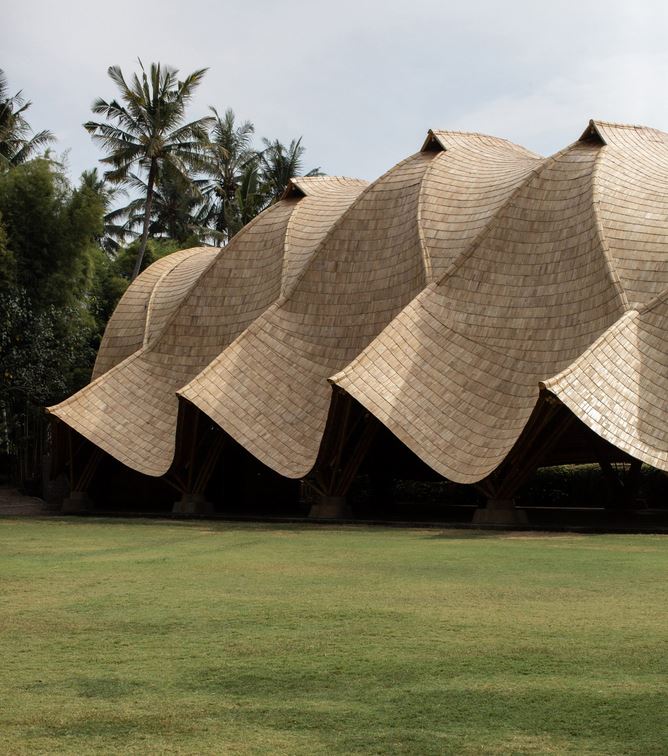
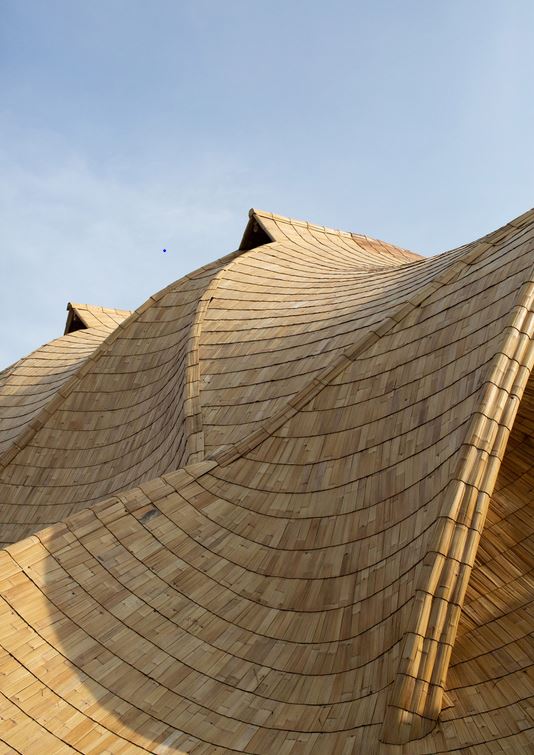
The Arc by Ibuku, Jörg Stamm and Atelier One
The team has topped the760sqm building with a complex double-curved roof made entirely from bamboo. The 14-metre-high parabolic bamboo arches support a lightweight organically shaped canopy that extends to the floor. The anticlastic gridshells that connect the arches, while providing buckling resistance to them, curve in two directions to create a robust, tensioned structure that echoes the shape of a mammals rib cage held in place by the tension from an outer layer of muscle and skin. In The Arc, bamboo splits transfer forces from arch to arch. The highly efficient structure is able to flex under load allowing the structure to redistribute weight, easing localised forces on the arches.
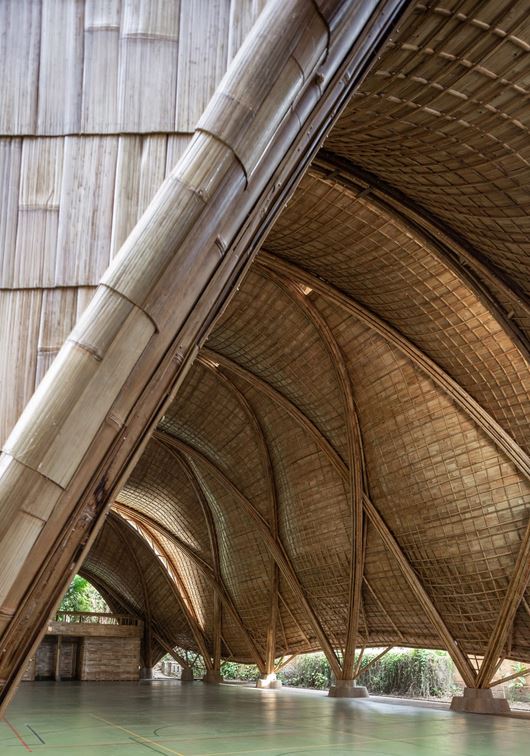
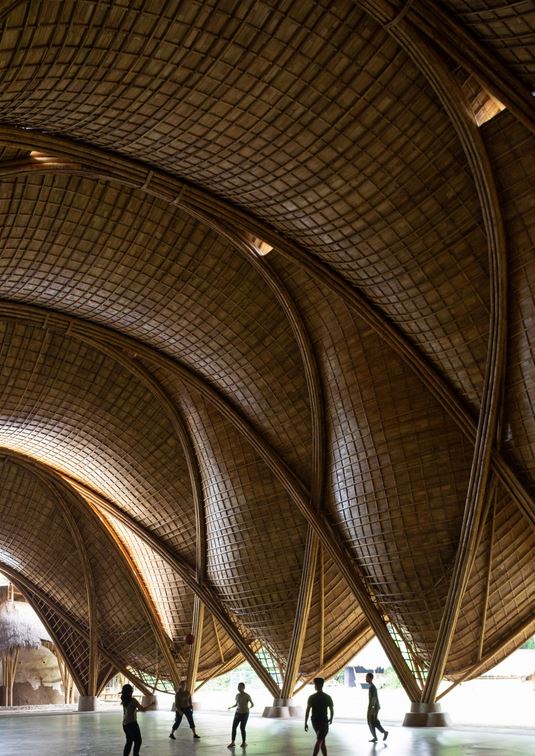
The Arc by Ibuku, Jörg Stamm and Atelier One
The arches supporting the pavilion’s roof span 19 metres and allow for a large floor area that is uninterrupted by supporting columns. The precise geometrical solution has allowed the structure to enclose a large inner volume with a minimal amount of material. Besides, spaces around the base of the canopy provide natural ventilation, which together with the building’s high energy efficiency makes the school a great example of sustainable architecture.
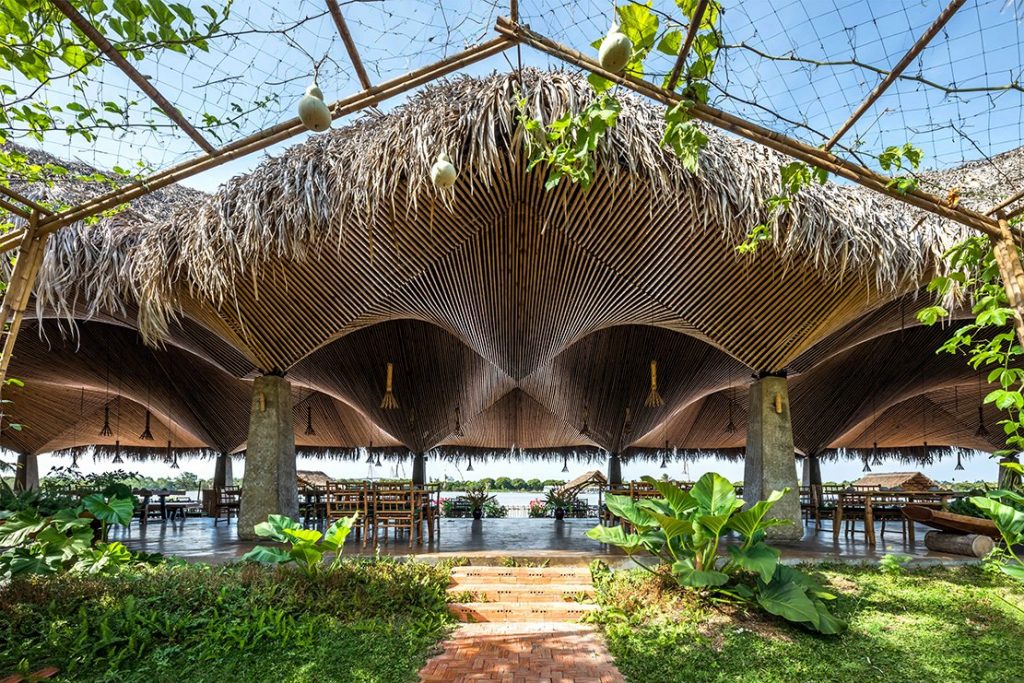
Que Dua by DDconcept (also header image)
Local practice DDconcept has also opted for a bamboo ceiling structure for Que Dua restaurant in Ben Tre province, Vietnam. Seeking to develop a structure that creates harmony between wind, water and architecture, the studio designed the main building as an open plan space with geometric concrete columns supporting the three-dimensional bamboo ceiling and coconut leaf roof.
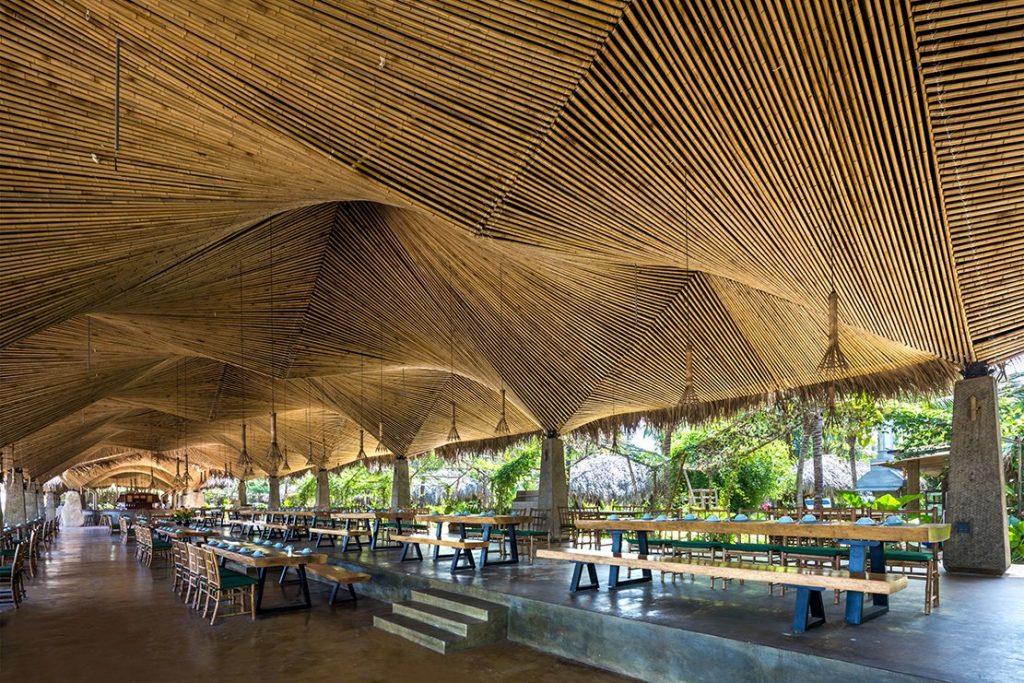
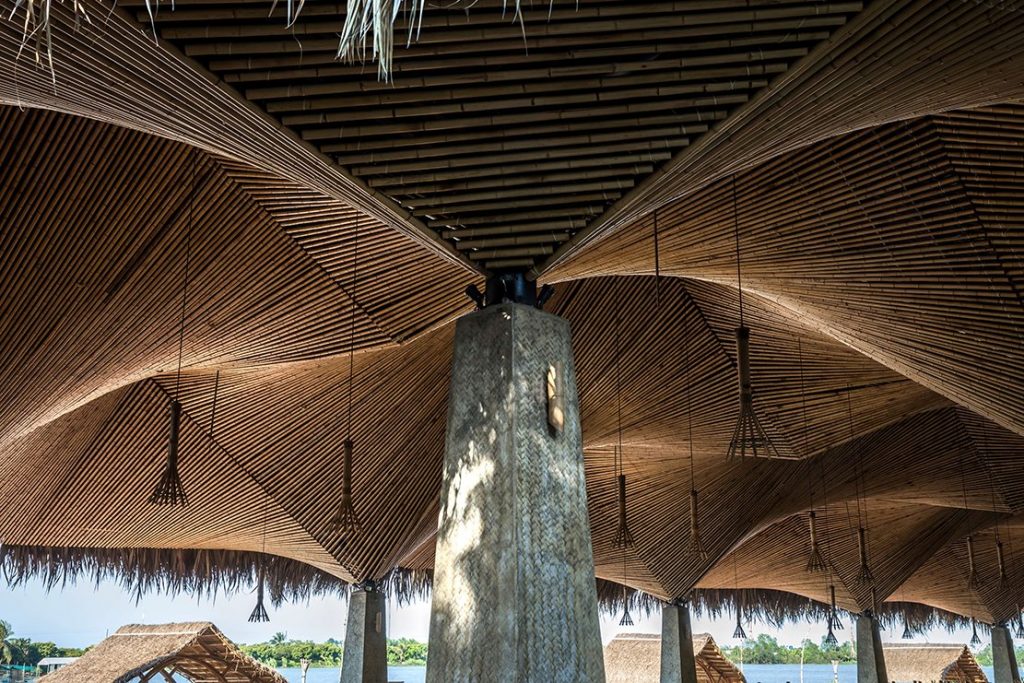
Que Dua by DDconcept
The undulating form of the bamboo ceiling balances between contemporary and vernacular architecture, while the lack of walls provides guests with uninterrupted views of the surrounding landscapes and the river, that they can enjoy right from their table.
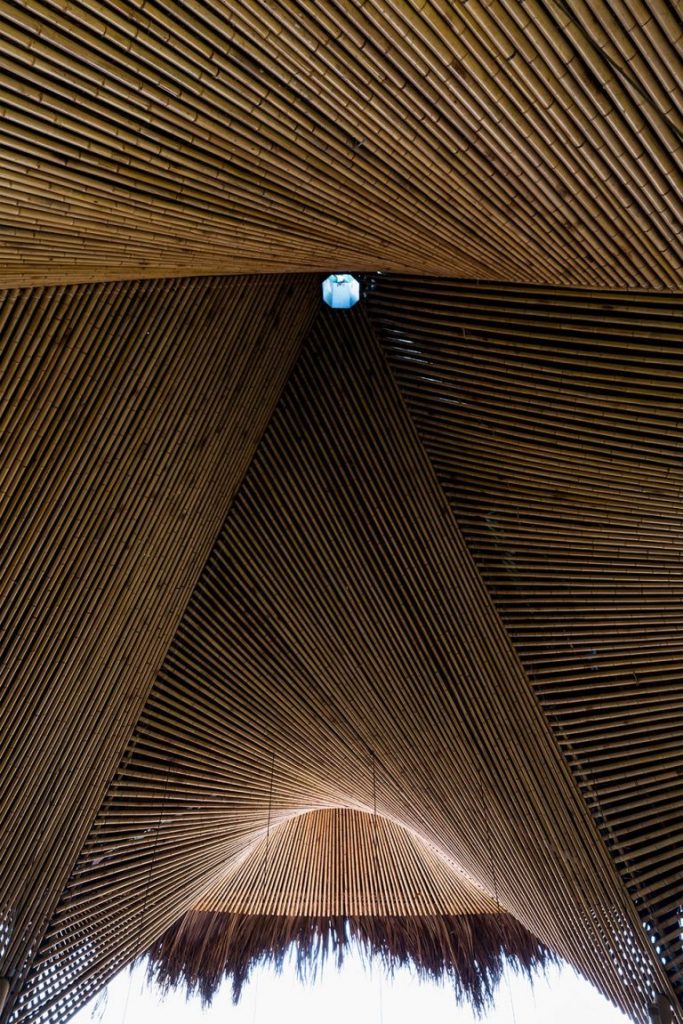
Que Dua by DDconcept
Apart from the main building, the restaurant comprises eight separate tents topped with leaf roofs that immerse guests in a tropical garden atmosphere. Overall, the project spans a total of 6000 sqm immersed in lush greenery.
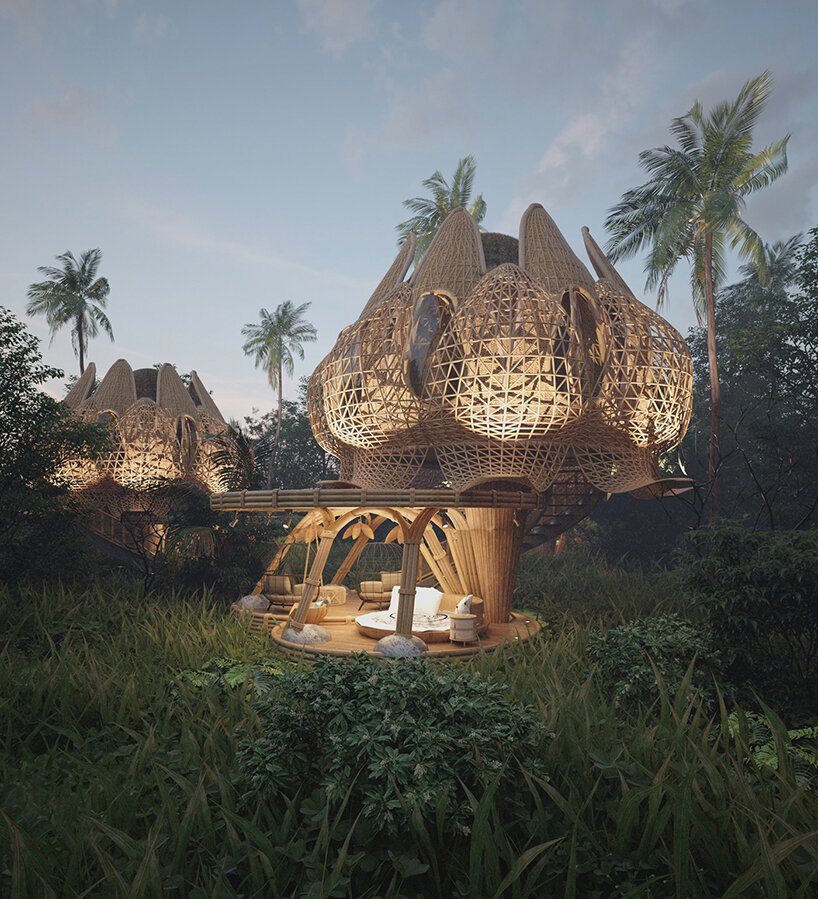
Hideout Lotus Bamboo Villas by Thilina Liyanage
Sri Lanka based designer Thilina Liyanage has envisioned a cluster of retreat villas made from interwoven bamboo and shaped as lotus flowers. The visualizations show four flower-inspired getaway cabins elevated on bent bamboo pillars, which are stacked on top of each other, in order to create protective borders around this area, while generating a tiered walking space that wraps around the villa’s canopied deck.
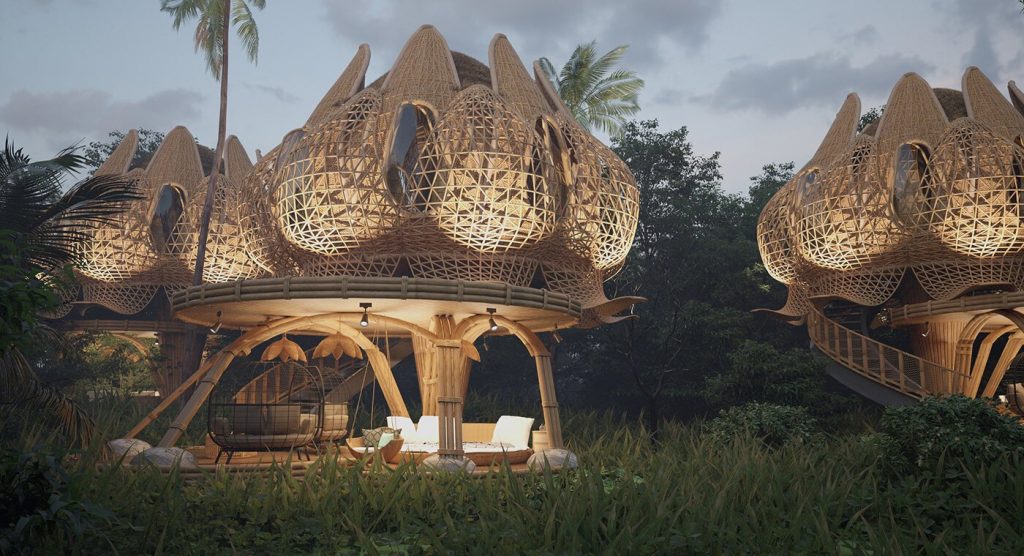
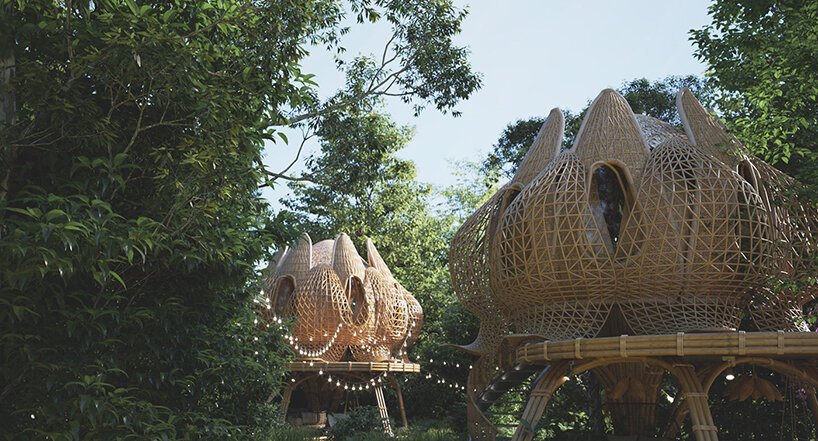
Hideout Lotus Bamboo Villas by Thilina Liyanage
The space below the villa’s elevated wooden deck accommodates a common outdoor area, where occupants can sit and relax, while the living quarters are situated on the upper level of the structure. The use of bamboo endows the project with an intriguing and mysterious character, making the guests feel as if they were placed inside of a lotus flower.
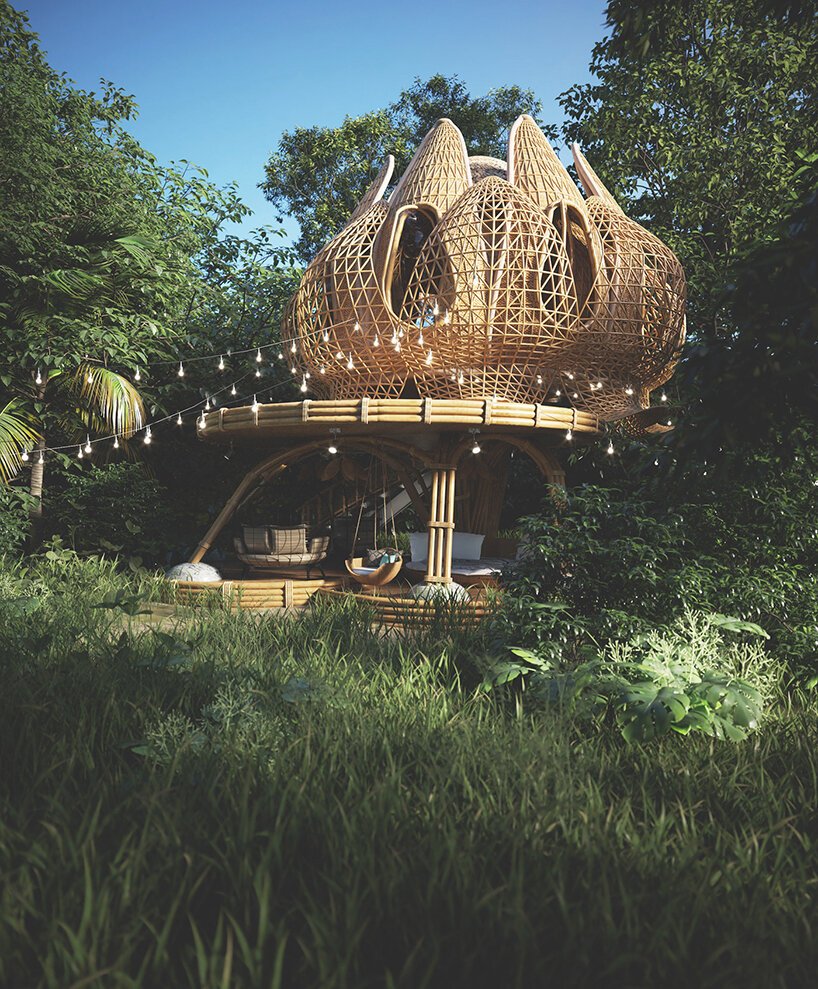
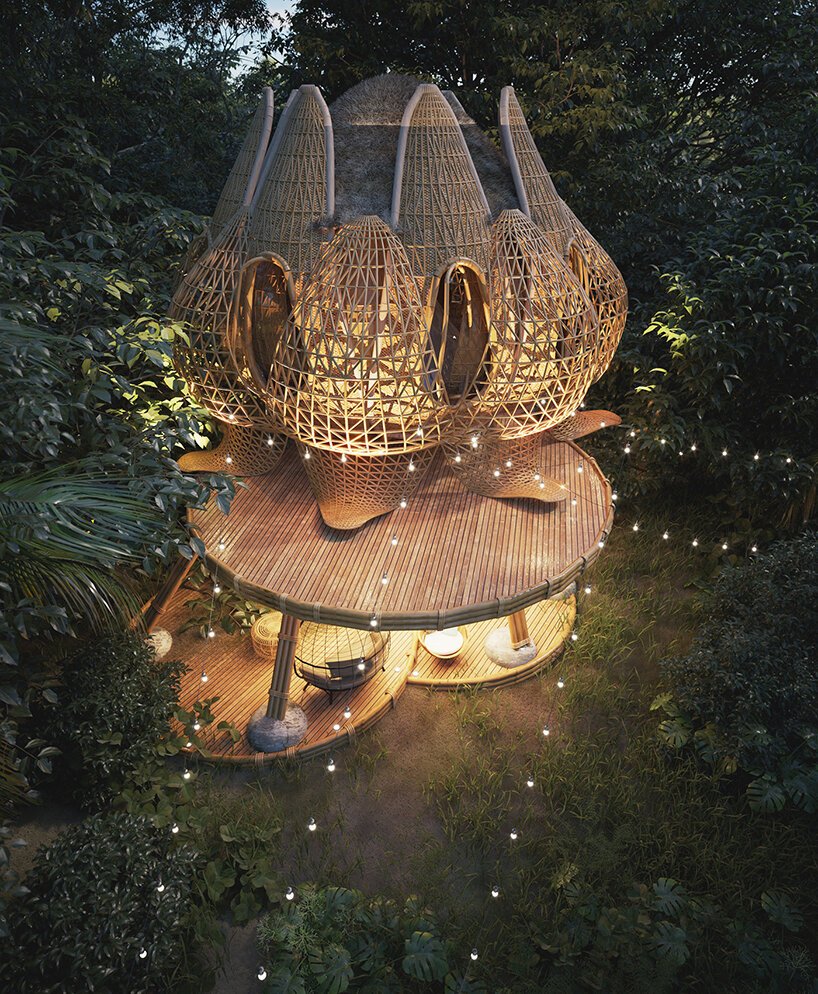
Hideout Lotus Bamboo Villas by Thilina Liyanage
The windows are camouflaged by an intricate bamboo lattice that envelopes the entire volume, providing privacy to the occupants, while the wooden-clad flooring matches the materiality and texture of the villas.